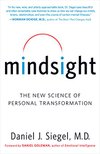
Saved by Jerely Martinez and
Mindsight: The New Science of Personal Transformation

Saved by Jerely Martinez and
Let me briefly map my meltdown against the nine prefrontal functions that I introduced in chapter 1. To summarize, they are 1) bodily regulation, 2) attuned communication, 3) emotional balance, 4) response flexibility, 5) fear modulation, 6) empathy, 7) insight, 8) moral awareness, and 9) intuition. These nine would top many researchers’ and
... See moreTo reconnect with myself, I needed to check in with the essential components of mental life—to reflect on my internal sensations, images, feelings, and thoughts.
As we mature, the hippocampus weaves the basic forms of emotional and perceptual memory into factual and autobiographical recollections, laying the foundation for my ability to tell you about that long-ago snake encounter in the Sierras. However, this uniquely
Each of us has a unique mind: unique thoughts, feelings, perceptions, memories, beliefs, and attitudes, and a unique set of regulatory patterns. These patterns shape the flow of energy and information inside us, and we also share them with other minds.
This “old mammalian brain” works closely with the brainstem and the body proper to create not only our basic drives but also our emotions. These feeling states are filled with a sense of meaning because the limbic regions evaluate our current situation. “Is this good or is this bad?”
we recognize that this mental event was not the totality of who we are, we gain the reflective distance and the freedom to take responsibility for our actions and feelings.
The neural networks throughout the interior of the body, including those surrounding the hollow organs, such as the intestines and the heart, send complex sensory input to the skull-based brain. This data forms the foundation for visceral maps that help us have a “gut feeling” or a “heartfelt” sense. Such input from the body forms a vital source of
... See moreThe sight of the bird may cause us to feel certain emotions, to hear or remember its song, and even to associate that song with ideas such as nature, hope, freedom, and peace. The more abstract and symbolic the representation, the higher in the nervous system
Indeed, the parts of our brain that process physical pain overlap with the neural centers that record social ruptures and rejection.